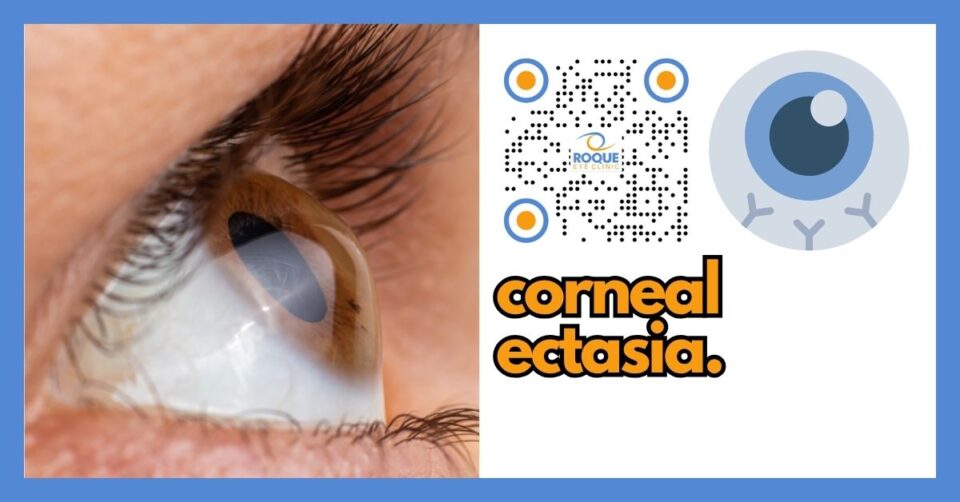ANIMATION
Key Learning Points
-
Punctal plugs are tiny, biocompatible stoppers placed in the natural tear‑drainage openings (puncta) to hold tears on the eye longer, easing dry‑eye symptoms.
-
Two main families of plugs exist: temporary, dissolvable collagen or polydioxanone plugs, and long‑term silicone or thermosensitive plugs.
-
The procedure is quick, in‑clinic, and virtually painless—usually finished in under five minutes.
-
Most patients feel relief within days, yet 1 in 5 may need an adjustment, replacement, or a different size to stay comfortable.
-
Scientific reviews show mixed but promising results: symptom scores often improve, though objective tear tests may not change dramatically.
-
Good candidates include people whose dry eye persists despite artificial tears, contact‑lens intolerance, or systemic conditions such as Sjögren syndrome.
-
Potential downsides—rare but real—are mild irritation, epiphora (watery eye), plug loss, or infection in the tear duct.
-
Aftercare is simple: lubricants, lid hygiene, and follow‑up in two weeks.
-
Lifestyle tweaks (hydration, screen‑time breaks, environment control) still matter.
-
Take‑home message: punctal plugs can feel like placing a “sink stopper” in your eyes’ plumbing—small tool, big comfort when used judiciously.
Punctal Plugs: A Complete Patient Guide
Holding On to Your Tears—Naturally
Introduction
Think of your eye like a kitchen sink. The faucet is your lacrimal gland, dripping nourishing tears; the drain is a pair of pin‑head holes—the puncta—on your upper and lower lids. In dry‑eye disease, the “water level” drops. A punctal plug is nothing more than a tiny stopper that blocks that drain so your own tears can finally stay on the “counter top.” Simple, elegant, and time‑tested, this miniature device can make the difference between scratchy misery and comfortable, clear vision.
1. Understanding Dry Eye and Tear Drainage
Dry‑eye disease (DED) affects an estimated 344 million people worldwide; in tropical, air‑conditioned Metro Manila, we see it daily. Tears normally wash across the cornea and escape through the puncta into the nose. When production is low—or the drain works overtime—the ocular surface becomes desert‑dry, triggering burning, redness, and blurred vision. Plugging the puncta tackles the second problem: excessive out‑flow.
1.1 The “Plumbing” Analogy
-
Faucet: lacrimal gland
-
Basin: ocular surface
-
Drain: puncta → canaliculi → nasolacrimal duct
-
Stopper: punctal plug prevents premature drainage
2. What Are Punctal Plugs?
Punctal plugs (also called lacrimal plugs) are grain‑of‑rice–sized implants produced from medical‑grade silicone, collagen, hydrogel, or polydioxanone. They come pre‑loaded on an inserter and either sit flush with the lid margin or slip entirely inside the canaliculus.
2.1 Types at a Glance
| Category | Material | Typical Longevity | Best For |
|---|---|---|---|
| Collagen (dissolvable) | Porcine collagen | 1–2 weeks | Diagnostic trial |
| Absorbable synthetic | Polydioxanone | 2–6 months | Post‑LASIK dryness, temporary relief |
| Thermosensitive intracanalicular | Acrylic hydrogel | 3–6 months, shrinks if overheated | Low‑profile comfort |
| Permanent dome plug | Silicone | Years (can be removed) | Chronic moderate‑severe DED |
| Extended‑duration tapered | Soft Plug 180‑T | 3 months, shape‑shifts to fit most puncta | Variable anatomy |
3. Who Needs a Plug?
1. Moderate to severe aqueous‑deficient DED unresponsive to lubricants.
2. Post‑cataract, LASIK, or SMILE patients with persistent dryness.
3. Contact‑lens intolerance due to rapid tear evaporation.
4. Systemic autoimmune disorders (e.g., Sjögren syndrome, rheumatoid arthritis).
5. Medication‑induced dryness (antihistamines, isotretinoin).
Contraindications: active eye infection, severe blepharitis, punctal stenosis, or uncontrolled inflammation.
4. Evidence Snapshot
Cochrane reviewers analyzed 10 randomized trials: symptom scores improved versus observation, but tear production changes were negligible; results varied by plug type.
A 2019 British Journal of Ophthalmology summary echoed these findings, stressing good patient selection.
Newer prospective data show silicone plugs reduce dry‑eye complaints and improve contrast sensitivity.
5. The In‑Clinic Procedure
-
Sizing: Your ophthalmologist gauges the punctum with a dilator.
-
Anesthesia: One drop of topical proparacaine.
-
Insertion: Using a sterile inserter, the plug is slid in place until it “clicks.” You should feel nothing more than gentle pressure.
-
Immediate Check: Dyes (fluorescein) confirm retention; vision returns instantly.
-
Exit Time: Whole visit ≈15 minutes.
6. After‑Care & Healing Steps
| Day | What to Do | Why |
|---|---|---|
| 0–1 | Use preservative‑free lubricants every 2 hours | Keeps cornea moist while plug settles |
| 1–7 | Warm compress & lid hygiene nightly | Prevents bacterial overgrowth |
| 14 | Follow‑up exam | Check retention, adjust size if epiphora |
| Ongoing | Blink exercises, 20‑20‑20 screen rule, Omega‑3 diet | Complements plug action |
Call us if you feel increasing pain, swelling, or a sudden gush of tears.
7. Benefits vs. Limitations
7.1 Benefits
-
Drug‑free solution—ideal for pregnant patients or polypharmacy.
-
Reversible—plugs can be removed if uncomfortable.
-
Synergistic with cyclosporine or lifitegrast drops.
-
Low cost compared with long‑term prescription medicines in the Philippines.
7.2 Limitations & Risks
| Issue | Frequency | Management |
|---|---|---|
| Plug loss | 5‑20 % | Replace with snugger size |
| Irritation/itch | 4 % | Topical steroids for 3‑5 days |
| Epiphora | 3 % | Remove or downsize |
| Canaliculitis | <1 % | Remove plug, antibiotics |
8. Preventive Lifestyle Tips
-
Hydrate: 8 glasses of water per day.
-
Blink breaks: Every 20 minutes, close your eyes fully twice.
-
Humidify: A desktop humidifier combats air‑conditioning dryness.
-
Balanced diet: Omega‑3‑rich fish twice weekly.
-
Protective eyewear: Wrap‑around glasses in windy environments.
9. Frequently Asked Questions
| Question | Answer |
|---|---|
| 1. Will I feel the plug? | Most patients don’t notice it; if you do, we simply swap sizes. |
| 2. How long before I notice relief? | Anywhere from a few hours to a week. |
| 3. Can the plug travel inside my eye? | No, it sits in the lid’s drainage hole, not in the eyeball. |
| 4. Is the procedure painful? | No—just a cool eyedrop and light pressure. |
| 5. What if it falls out? | Bring it in (or a photo); we’ll replace it. |
| 6. Will I still need artificial tears? | Usually less often, but you may still use them. |
| 7. Can I swim right after? | Wait 24 hours, wear goggles, and rinse afterward. |
| 8. Do plugs cure dry eye? | They control symptoms but don’t cure the underlying cause. |
| 9. Are there alternatives? | Yes: prescription drops, warming masks, intense‑pulse‑light therapy. |
| 10. What’s the cost in the Philippines? | At Roque Eye Clinic, temporary plugs start at ₱3,000 per eye; permanent silicone plugs are ₱6,500 per eye (prices subject to change). |
Take‑Home Message
Punctal plugs act like tiny sink stoppers in your eyes’ drainage system, conserving every drop of your natural tears. When chosen for the right patient and combined with smart lifestyle habits, they offer safe, rapid, drug‑free relief from the burning and blurring of dry eye.
Bibliography
-
Ervin AM, Law A, Pucker AD. Punctal occlusion for dry eye syndrome. Cochrane Database Syst Rev. 2017;6(6):CD006775. doi:10.1002/14651858.CD006775.pub3.
-
Ervin AM, Law A, Pucker AD. Punctal occlusion for dry eye syndrome: summary of a Cochrane systematic review. Br J Ophthalmol. 2019;103(3):301‑306. doi:10.1136/bjophthalmol‑2018‑313267.
-
Best AL et al. Punctal and canalicular plugs: indications, efficacy and safety. J Fr Ophtalmol. 2019;42(3):e95‑e104. doi:10.1016/j.jfo.2018.12.003.
-
Singh RB et al. Efficacy and retention of silicone punctal plugs for treatment of dry eye in patients with and without ocular graft‑versus‑host disease. Ocul Surf. 2020;18(4):731‑735. doi:10.1016/j.jtos.2020.07.018.
-
Jin HD et al. The effect of punctal plugs in reducing ocular surface irritation after povidone‑iodine preparation of intravitreal injection—a randomized trial. Eye (Lond). 2022;36(3):568‑574. doi:10.1038/s41433‑021‑01476‑3.
BOOK AN APPOINTMENT
It takes less than 5 minutes to complete your online booking. Alternatively, you may call our BGC Clinic, or our Alabang Clinic for assistance.






